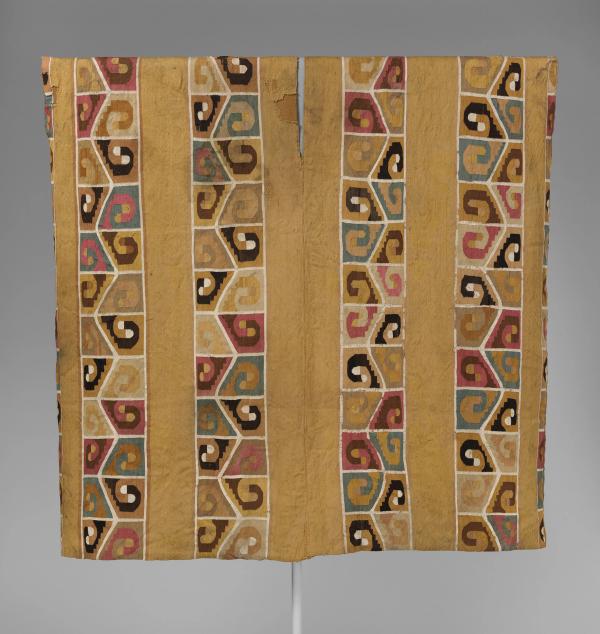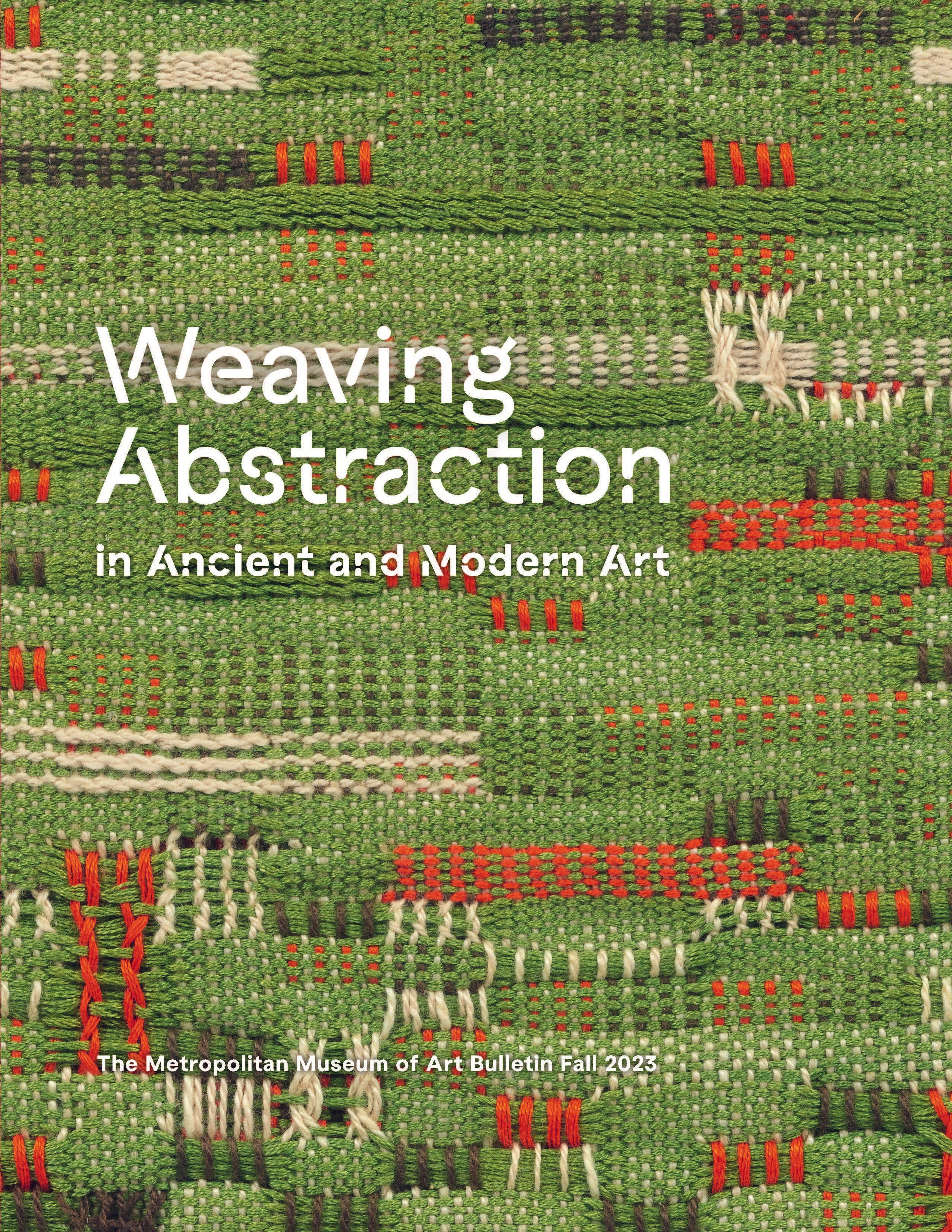Tapestry Tunic
In the Precolumbian Andes, sleeveless tunics reaching to the knees and worn over a loincloth were the primary male garment. Tapestry-woven tunics were the most prestigious, and the finest examples were made of up to eighteen miles of handspun camelid wool. As with those of their successors, the Incas, Wari tunics are standardized in size, format, color, and design, suggesting they were produced in state-sponsored workshops. On this fine tunic, a wavelike motif known as a stepped fret is arranged in registers in vertical bands, separated by a white border. The precise significance of this motif is not known, but the dazzling interplay of harmonious colors—pink, magenta, turquoise, crimson, and brown, against a light brown background, creates a strikingly bold visual statement.
Artwork Details
- Title:Tapestry Tunic
- Date:7th–9th century
- Geography:Peru
- Culture:Wari
- Medium:Camelid wool
- Dimensions:H. 42 11/16 × W. 42 15/16 in. (108.5 × 109 cm)
- Classification:Textiles-Woven
- Credit Line:Gift of Claudia Quentin, in celebration of the Museum's 150th Anniversary, 2020
- Object Number:2020.79
- Curatorial Department: The Michael C. Rockefeller Wing
Audio

1652. Túnica, artista(s) wari
Joanne Pillsbury y Nilda Callañuapa Álvarez
JOANNE PILLSBURY: Lo que vemos aquí es una túnica: la prenda masculina por excelencia en la región andina durante el período prehispánico. Usada sobre una prenda íntima, la túnica cubría el cuerpo hasta por encima de las rodillas.
JOSÉ MARÍA YAZPIK (NARRADOR): Joanne Pillsbury, Metropolitan Museum of Art.
JOANNE PILLSBURY: Cualquier persona andina que viera a alguien vistiendo una prenda como ésta, hubiera reconocido inmediatamente el alto estatus del usuario, porque la confección de estas túnicas era de la más alta calidad.
JOSÉ MARÍA YAZPIK: Esta túnica fue elaborada en un taller imperial wari. Los wari fueron el primer poder imperial expansivo en la región andina, predecesores de los incas. Los materiales revelan el alcance y la complejidad de la red económica wari.
JOANNE PILLSBURY: Vemos que esta túnica, por ejemplo, está confeccionada en algodón, que se habría cultivado en la costa, pero también tiene fibras de camélido, obtenidas en las tierras altas. El pelo del camélido absorbe el tinte con bastante facilidad. De esta forma, se pueden obtener los colores increíblemente vivos que observamos en estas túnicas.
JOSÉ MARÍA YAZPIK: Nilda Callañaupa Álvarez, tejedora de Chinchero, Perú, nos explica los orígenes de los colores.
NILDA CALLAÑAUPA ÁLVAREZ: En el pasado todo era tinte natural, y en los andes cuanto más alto uno va, no hay tampoco materiales con tinte natural como en la selva, o quizás como se es común en la costa, entonces, el intercambio de tintes es obvio que ha sucedido con ceja de selva a selva y quizás algunos hasta de la costa.
JOSÉ MARÍA YAZPIK: Mediante el uso de telares de cintura y materiales naturales, los antiguos tejedores desarrollaron un sorprendente lenguaje visual.
JOANNE PILLSBURY: Lo que observamos es el desarrollo de una abstracción geométrica poderosa. En estas prendas puede haber elementos figurativos, pero que aparecen con frecuencia descompuestos y recombinados de manera muy creativa. Vemos un extraordinario juego de formas e interacción de colores que es algo complejo y maravilloso.
More Artwork
Research Resources
The Met provides unparalleled resources for research and welcomes an international community of students and scholars. The Met's Open Access API is where creators and researchers can connect to the The Met collection. Open Access data and public domain images are available for unrestricted commercial and noncommercial use without permission or fee.
To request images under copyright and other restrictions, please use this Image Request form.
Feedback
We continue to research and examine historical and cultural context for objects in The Met collection. If you have comments or questions about this object record, please contact us using the form below. The Museum looks forward to receiving your comments.
